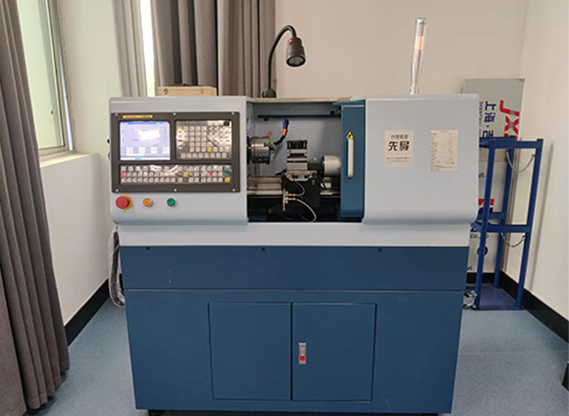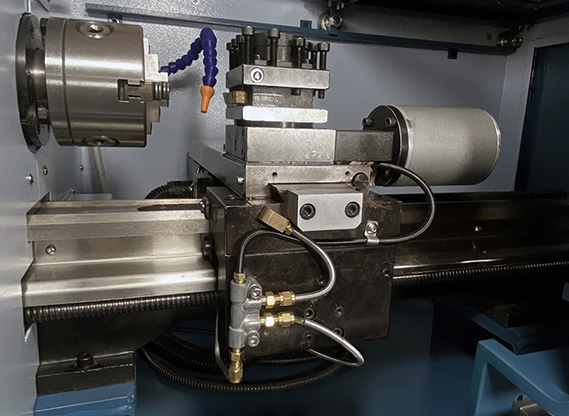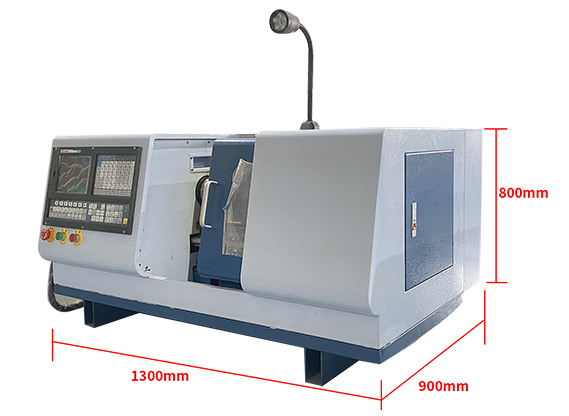
Add Date: 2025/3/18 Views: 1
Keywords: # Small CNC Machine Tool, # Desktop CNC Machine Tool, # Small Teaching CNC Milling Machine, # Small Teaching Machining Center, # Desktop CNC Lathe
Do you know what metalworking is? It refers to the processing of metal workpieces. Its main task is to alter or create metal devices and machine parts by processing various materials to give them specific properties. Metalworking is typically divided into several categories, such as fitting, turning, planing, milling, grinding, and casting. Its core content includes fundamental techniques like forging, welding, basic knowledge of metal cutting, and mechanical drawing.
For example, turning involves using a lathe to cut metal workpieces to achieve the desired size and shape. Fitting, on the other hand, focuses on manual operations like sawing, filing, and chiseling, which are used for processing and assembling metals. Metalworking finds extensive applications in industries such as mechanical manufacturing, aerospace, automotive manufacturing, electronic equipment, and construction. In the automotive manufacturing sector, for instance, metalworking processes are used to produce critical components like engine parts and body frames.
In the field of mechanical processing, metalworking typically involves a series of complex steps aimed at transforming raw materials (such as metal bars and sheets) into the required parts or products. Here are the general steps involved in metalworking:

1. Material Preparation
Material Selection: Choose suitable metal materials based on factors like performance requirements, working conditions, and cost. Common choices include steel, cast iron, and copper alloys.
Material Inspection: Conduct inspections on raw materials to check dimensions, appearance, chemical composition, and mechanical properties to ensure they meet the required standards.
2. Process Design
Developing Process Routes: Determine the processing methods and sequence based on the part's drawings and technical requirements. For example, decide whether to perform turning before milling.
Selecting Machining Equipment: Choose appropriate machine tools based on the required processing accuracy and efficiency. Options include conventional machine tools or CNC machine tools.
Determining Cutting Parameters: Establish parameters such as cutting speed, feed rate, and cutting depth to ensure processing quality and efficiency.
3. Blank Manufacturing
Casting: Melt metal and pour it into sand molds or metal molds. After cooling and solidification, a blank is formed.
Forging: Use hammering or pressure to cause plastic deformation in metal blanks, resulting in blanks with the desired shape and size.
Stamping: Process metal sheets using dies and presses to perform operations like blanking, bending, and drawing to obtain blanks of the required shape.

4. Mechanical Processing
Turning: Use a lathe to cut rotating workpieces for operations like turning outer diameters, facing, and grooving.
Milling: Use a milling cutter to cut workpieces for operations like planing and slotting.
Drilling: Use a drill bit to create holes in workpieces, including drilling, enlarging, and reaming.
Grinding: Use a grinding wheel for finishing workpiece surfaces to improve surface quality and dimensional accuracy, such as cylindrical grinding and surface grinding.
Fitting Operations: Include manual operations like marking, sawing, filing, scraping, and lapping, which are used for processing and finishing workpieces.
5. Finished Product Inspection
Dimensional Inspection: Use measuring tools like calipers, micrometers, and gauge blocks to check if the workpiece dimensions meet the requirements.
Form and Positional Tolerance Inspection: Check the shape and positional errors of the workpiece, such as straightness, flatness, and perpendicularity.
Surface Quality Inspection: Examine the workpiece surface for defects like scratches and cracks, and assess surface roughness.
Performance Inspection: Conduct tests on workpieces with special performance requirements, such as hardness testing and metallographic analysis.
By following these steps, metal raw materials can be processed into high-quality parts that meet design requirements. In actual production, these steps may be adjusted and optimized based on specific part shapes, sizes, and precision requirements.
Compact CNC Lathe, Model: C59

This machine comes standard with an industrial-grade CNC system, ball screw, compact size, high precision, stable performance, and great value for money. Servo positioning control ensures quick and precise positioning. The four-station electric tool post enables complex workpiece machining, making it an ideal choice for small parts processing. It can be equipped with front or rear pneumatic chucks and automatic feeding devices. It can be automated as per Industry 4.0 requirements. Multiple machines can be centrally managed and monitored, with various communication methods for data exchange. The upper-level program interface can be developed by customers, simple and convenient, and it has FMS compatibility, making it the first choice for universities to study flexible processing. It can be configured with other mainstream CNC systems like Guangshu and Kaindi as per user requirements.
Technical Parameters:
|
X-axis travel |
90 |
|
Z-axis travel |
295 |
|
Spindle through hole |
26 |
|
Tailstock hole taper |
MT#2 |
|
Spindle hole taper |
MT#4 |
|
Spindle motor power |
1.1KW |
|
Spindle speed |
300~1750r/min(无级调速) |
|
Max. chuck holding size |
φ100mm |
|
Max. swing diameter |
φ210mm |
|
Rapid traverse speed |
Z轴6000mm/min |
|
X轴6000mm/min |
|
|
Max. torque of X-axis stepper motor |
2.2N/m |
|
Max. torque of Z-axis stepper motor |
2.2N/m |
|
Net weight |
280KG |
|
Machine Size |
1300*900*800mm 1300*900*1530mm(含底座) |
Applicable Industries: Small parts processing for hardware processing plants, scientific research and development for enterprises or universities, prototype making, and CNC education in universities or vocational colleges.
Welcome to our video link:
YouTube: Xendoll
Facebook: Xendoll
WEB:www.xendolltools.com